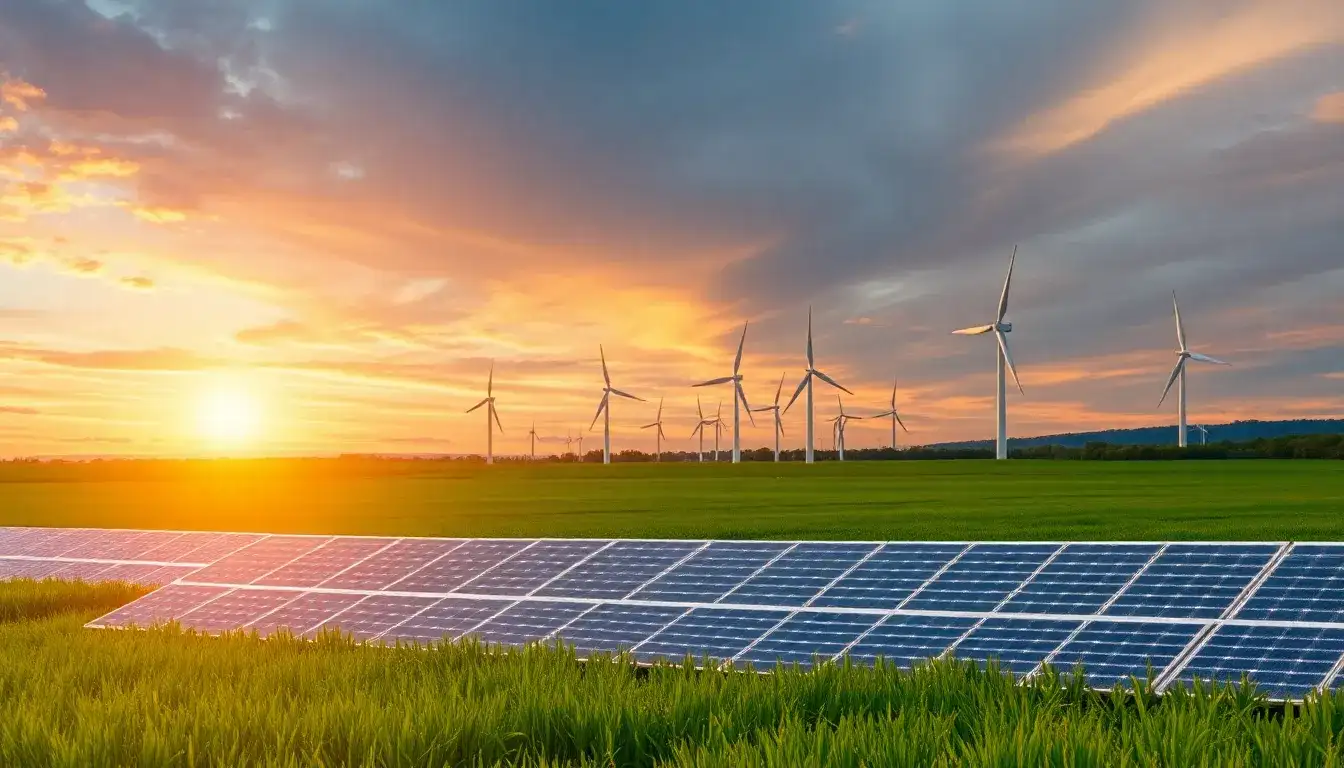
New Energy Market Stimulates Rush to Install – Price Increases in Photovoltaics; Wind Power Season Not as Weak – Research Report
On March 28, 2025, Dongwu Securities released its monthly new energy report indicating a surge in installations due to new energy market dynamics, with photovoltaic prices on the rise and wind power remaining robust even in the off-season. Here are the key findings from the report:
Domestic installations in 2024 are projected to grow by 28%, with steady demand throughout the year. In January and February 2025, an additional 39.5 GW of installations were reported, indicating stable growth. The National Development and Reform Commission and the National Energy Administration have suggested that all new energy projects should enter the electricity market, with pricing determined through market transactions. The central government’s No. 1 document for 2025 emphasizes the need to enhance the development and utilization of distributed renewable energy in rural areas. Additionally, the government work report for 2025 calls for the acceleration of the ‘Shagehuang’ new energy base construction, development of offshore wind power, and coordination of local consumption and export pathways.
On February 25, the State Administration for Market Regulation held a symposium with several enterprises to discuss fair competition and address the issue of “involution” in competition. Internationally, demand continues to grow steadily, and installation plans are being rolled out. The CPIA annual conference on February 27 projected that 531 to 583 GW of new global photovoltaic installations will occur in 2025, reflecting a potential 10% year-on-year increase under optimistic conditions. BNEF forecasts a 3.5% compound annual growth rate for global photovoltaic installations from 2025 to 2035. In January, India and Taiwan experienced significant year-on-year growth in new installations, while plans for photovoltaic installations and power stations were announced for India, Israel, and Mexico with a target for 2030.
In the photovoltaic inverter market, major companies like SolarEdge have been reducing their workforce, while established firms such as ABB are making a comeback. The supply chain shows signs of a weak recovery, stabilizing prices as demand improves. In February 2025, polysilicon production reached approximately 92,300 tons, with the weekly average price for N-type materials at 37.2 yuan/kg. Major manufacturers remain cautious about market trends, focusing on price stability at this stage. The silicon wafer industry continues to practice self-discipline, with the average price of 182N at 1.19 yuan/piece on March 13, reflecting a month-on-month increase of 0.85%. Battery production has resumed, leading to a steady increase in TOPCon prices, with single wafer prices at 0.31/0.30 yuan on March 19. A surge in demand from distributed projects is becoming evident, prompting TOPCon module manufacturers to raise their prices to 0.73 yuan/W, marking a month-on-month growth of 5.8%.
As downstream demand rebounds, prices for auxiliary materials like glass and adhesive films have slightly increased, indicating gradual recovery in profitability. The large-scale energy storage market is expected to experience significant growth, particularly in the U.S., which maintains high growth rates, while Europe and emerging markets enter peak grid connection periods. In the U.S., 216 MW of large-scale storage was installed in January 2025, representing a year-on-year increase of 24%, with a corresponding capacity of 593 MWh, reflecting a 73% year-on-year increase. The record number of large-scale storage projects indicates optimism for 2025 installations.
In China, installations in 2024 are expected to reach 43.7 GW/109.8 GWh, marking a year-on-year increase of 103%/136%, surpassing market expectations. The removal of mandatory storage requirements is anticipated to drive steady growth in energy storage due to economic factors. In Europe, the installation forecast for 2024 is 8 GWh, up 125%, with further expansion expected in 2025. In the Middle East, BYD has secured a 12.5 GWh order from SEC for phase three, and CATL has won a 20 GWh project for the Abu Dhabi Masdar data center, suggesting a significant uptick in energy storage installations in the region.
Despite a downturn in offshore wind installations in 2024, January’s bidding results were promising. In January and February 2025, onshore wind installations totaled 9.3 GW, down 6.2% year-on-year. Bidding results for onshore wind in the same period reached 10.5 GW, representing a year-on-year increase of 78%, indicating continued high demand. Conversely, offshore wind bidding during this time was at 0.85 GW, which reflected a softer market response. However, significant projects in Guangdong, Jiangsu, and Liaoning are expected to achieve breakthroughs in 2025.
Investment Recommendations: 1) High-demand sectors: Inverters and brackets (e.g., Sungrow, Deao, Shangen Electric, CITIC, Jinlang Technology, Hemai, GoodWe, Shenghong, Airo Energy, Tongrun Equipment, YN Technology, and Keda Data); 2) Leading photovoltaic companies benefiting from supply-side reforms and cost advantages (e.g., GCL-Poly, Tongwei, Flat Glass, and Foster) and companies with strong distribution advantages (e.g., Jinko Solar, Canadian Solar, JA Solar, Trina Solar, Longi Green Energy, and Hengdian East Magnet); 3) Leaders in new technologies (e.g., Longi Green Energy, Junda, Aiko, TCL Zhonghuan, Juhua Materials, Dike, Yubang New Materials, and Meichang). In wind energy, 2025 will see a resonance of onshore and offshore installations, with deep-sea growth potential. Strong players in submarine cables (e.g., Orient Cable, Hengtong Optics), towers (e.g., Tiensun Wind Energy, Taisheng Wind Energy, Daikin Heavy Industries, and Haile Wind Power), main units (e.g., Sany Heavy Energy, Mingyang Smart Energy, Goldwind, and Yunda), and components (e.g., Rihua, Jinlei, and Times New Materials) are expected to thrive.
Risk Warning: Risks include intensified competition, unexpected policy changes, limitations on grid absorption, renewable energy installation shortfalls, and insufficient raw material supply.







